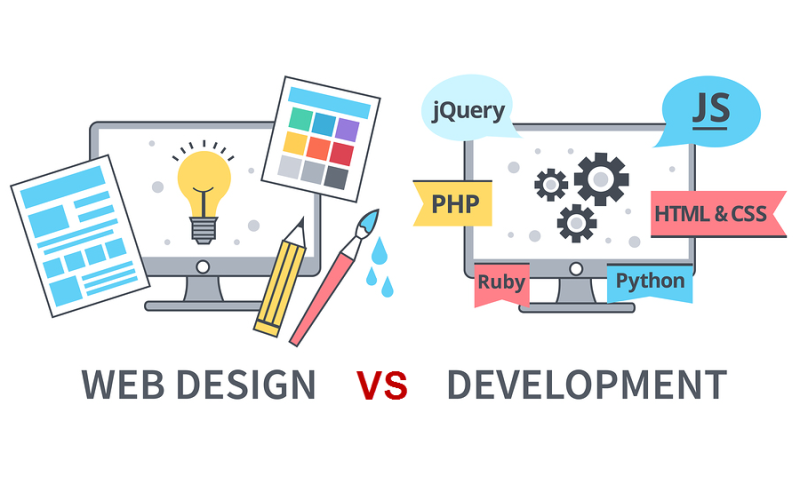1. Planning and Requirement Analysis
Goal Setting: Understand what you want your website to achieve. Is it an informational site, an e-commerce platform, a portfolio, or something else?
Requirement Gathering: Define the functionality, features, and user interactions you want on your site. This might include forms, galleries, shopping carts, etc.
2. Design to Development Handoff
If the design phase is separate, the development phase begins with a handoff from the design team. This usually includes mockups, wireframes, and any necessary assets (images, icons, fonts).
Technical Planning: Decide on the architecture, programming languages, and frameworks best suited for the project's needs.
3. Front-End Development
HTML/CSS/JavaScript: Convert design mockups into web pages using HTML for structure, CSS for styling, and JavaScript for interactivity.
Frameworks and Libraries: Use frameworks (like React, Angular, or Vue) to streamline and enhance development.
Responsive Design: Ensure the website is accessible and provides a seamless user experience across all devices (desktops, tablets, smartphones).
4. Back-End Development
Server, Database, and Application Logic: Set up the server, choose a database (MySQL, PostgreSQL, MongoDB), and program the logic of your application (user registration, content management, etc.).
Programming Languages and Frameworks: Depending on your requirements, you might use languages and frameworks like Node.js, Ruby on Rails, Django (Python), or Laravel (PHP).
APIs: Develop or integrate APIs for dynamic data exchange between the front-end and back-end or with third-party services.
5. Testing and Quality Assurance
Functionality Testing: Ensure all features work as expected across different browsers and devices.
Performance Testing: Check loading times and responsiveness, optimizing as necessary.
Security Testing: Implement security measures to protect against threats such as SQL injection, cross-site scripting (XSS), and data breaches.
6. Launch
Deployment: Move the website from a development environment to live servers. This involves setting up the domain, choosing a hosting environment, and configuring the server.
Final Testing: Perform a final round of testing in the live environment to ensure everything operates smoothly.
7. Maintenance and Continuous Development
Regular Updates: Keep your site's content fresh and engaging for visitors, and update the software to patch any security vulnerabilities.
Feedback Loop: Gather user feedback for insights into potential improvements or new features.
Analytics: Monitor website traffic and user behavior to inform future development efforts.
8. SEO and Accessibility
Search Engine Optimization (SEO): Implement SEO best practices to improve your site?s visibility in search engine results.
Accessibility: Ensure your website is accessible to users with disabilities, following guidelines like the Web Content Accessibility Guidelines (WCAG).
